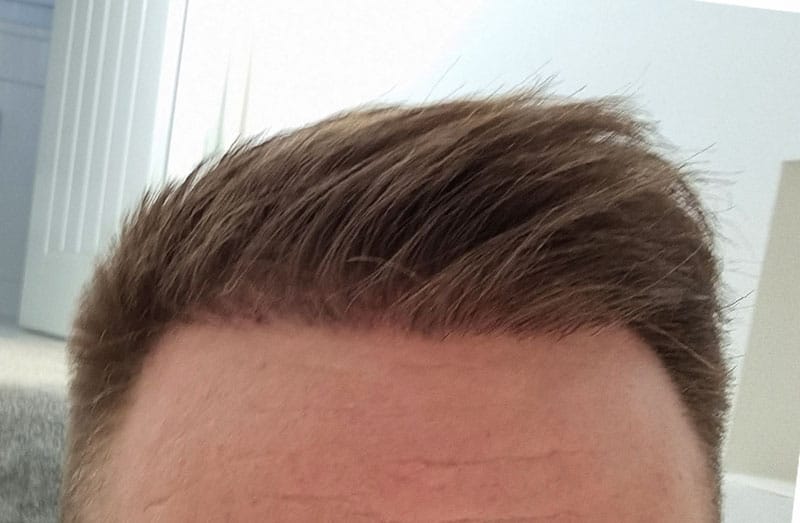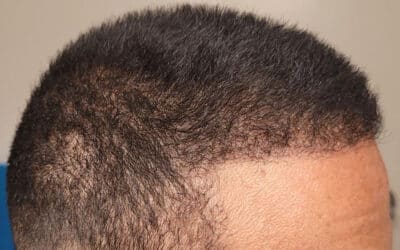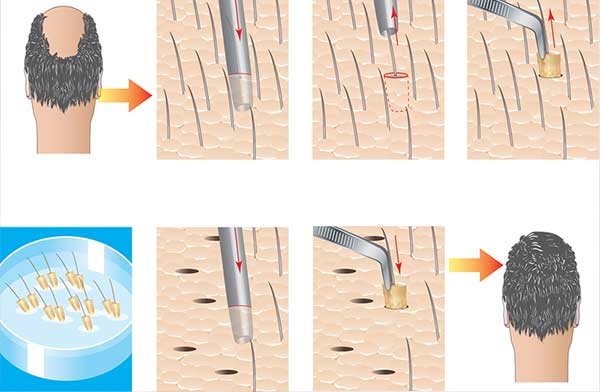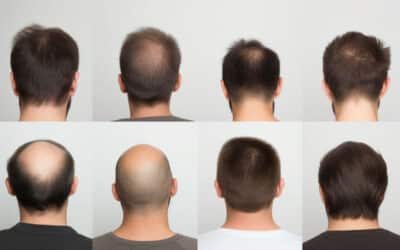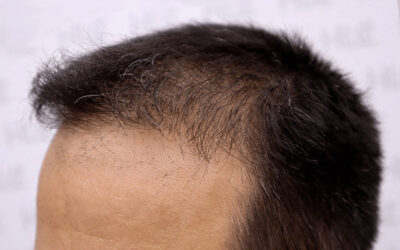Hair loss concerns people worldwide, and new solutions continue to emerge. However, the rise of Follicular Unit Extraction (FUE) methods has sparked an unexpected problem: overharvesting.
In the pursuit of regaining a full head of hair, some practices have crossed ethical and practical boundaries. An analysis of the crisis surrounding FUE overharvesting, its causes, consequences, and steps toward resolution is presented in this article. Brace yourself as we unravel this complex issue together!
Understanding FUE Overharvesting: The Root of the Problem
Follicular Unit Extraction (FUE) overharvesting refers to the excessive removal of hair follicles during a transplant FUE procedure, which can lead to significant complications. This issue demands a closer examination of its underlying causes.
- Definition and Causes: What FUE overharvesting means and the underlying reasons.
- Industry Practices: How certain practices lead to overharvesting.
- Long-term Effects: The lasting impact on the scalp and hair growth.
- Prevention Measures: Methods and guidelines to prevent this from happening.
Complications and Risks of FUE

Excessive harvesting in FUE presents more than just an aesthetic concern; it carries a substantial risk and potential for complications, resembling a delicate dance with imminent disaster.
| Category | Description |
| Medical Complications | Chronic pain, infection, and other health problems can occur. |
| Aesthetic Failures | Uneven growth, visible scarring, or unnatural appearance. |
| Ethical and legal concerns | Potential legal issues and the ethical dilemma faced by practitioners. |
| The recovery challenges | The difficulties in correcting an overharvested area, both medically and aesthetically. |
Innovative Hair Transplant Techniques: What’s the Deal?
This section explores the latest advancements and methodologies in hair transplantation, with a focus on responsible practices that prevent excessive harvesting.
| Innovation | Description |
| Assisting robots | Enhancing precision in transplantation procedures with robotic systems. |
| A personalized treatment plan | Tailoring procedures according to individual needs, hair type, and scalp conditions. |
| Minimally Invasive Methods | Minimizing scarring and reducing recovery time with new techniques. |
| Preservation of folicles | Follicle health and growth success methods and technologies. |
Hair Restoration Practices and Ethical Considerations
This part sheds light on the moral aspects and responsible conduct in hair restoration:
- Informed Consent: Ensuring patients fully understand the procedure, risks, and alternatives.
- Transparency in Advertising: Honest representation of success rates, potential risks, and practitioner qualifications.
- Overharvesting Prevention: Adoption of guidelines to prevent overharvesting.
- Ongoing Education and Training: Continuous updating of practitioners’ knowledge and adherence to ethical guidelines.
The impact of FUE overharvesting on patients

FUE overharvesting can significantly impact patients, both physically and emotionally. Some potential consequences of overharvesting include:
- Scarring: Extracting too many hair follicles can leave scars in the donor area.
- Uneven hair growth: Overharvesting can lead to uneven hair growth in the recipient area.
- Permanent hair loss: In some cases, overharvesting can cause permanent hair loss in the donor area.
- Pain: The extraction of hair follicles can be painful, and overharvesting can worsen the pain.
- Psychological distress: The physical and emotional consequences of overharvesting can lead to psychological distress, such as anxiety and depression.
The role of patients in preventing FUE overharvesting
Patients can play a role in preventing FUE overharvesting by taking the following steps:
- Do your research: Choose a qualified, experienced hair transplant surgeon committed to ethical practices.
- Be informed: Ask your surgeon about the overharvesting risks and ensure you understand them.
- Be aware of the signs: If you experience any of the signs of overharvesting, such as scarring, uneven hair growth, or pain, talk to your surgeon immediately.
- Report overharvesting: If you believe you have been a victim of overharvesting, report it to the appropriate authorities.
Overharvesting of FUE: Environmental Impacts

An often-overlooked aspect, this section delves into how FUE overharvesting might affect our environment:
- Waste Management: The proper disposal of tools, materials, and biological waste.
- Energy Consumption: Analyzing energy use in extensive and repeated procedures.
- Sustainable Practices: Implementing procedures that minimize environmental impact.
- Community Outreach and Education: Educating practitioners and the public about the environmental aspects of hair transplantation.
The Future of FUE
In the realm of hair restoration, a sneak peek into the future awaits—an exploration of uncharted territories and what lies ahead.
- Artificial Intelligence in FUE: How AI could revolutionize precision and customization.
- Personalized Gene Therapy: Tailoring treatment to the genetic makeup of the patient.
- Sustainability in Procedures: Looking at eco-friendly methods and materials.
- Global Standards and Regulation: A vision for universal quality and ethical practices.
The crisis of FUE overharvesting poses a significant challenge, affecting patients, practitioners, and the environment. However, there is room for optimism as the industry can chart a new path forward by embracing ethical guidelines, investing in cutting-edge technologies, and showcasing success stories. It is crucial to foster collaboration to ensure efficacy and responsibility in the future of hair restoration.
Ready to transform your life and boost your confidence? Book a Consultation with our expert Hair Transplants Los Angeles team today and take the first step toward a new you!
FAQs
Follicular Unit Extraction (FUE) overharvesting occurs when excessive hair follicles are extracted. This can result in various complications and diminish the quality of the outcomes.
Overharvesting has detrimental effects such as scarring, uneven outcomes, and the potential for permanent hair loss in the donor area. These consequences can result in physical and emotional distress for individuals undergoing these procedures.
To address this issue, various approaches can be implemented. These include upholding ethical practices, implementing relevant regulations, incorporating innovative technologies, and providing education to both practitioners and patients.
Absolutely! When done responsibly, FUE is an effective method. The quality of care should be ensured by a qualified and experienced professional.
To ensure your ease of mind, you can view our customer recommendations HERE. Furthermore, you can also see our Google reviews and Yelp reviews. We can’t wait to help you start restoring your lost hair.


